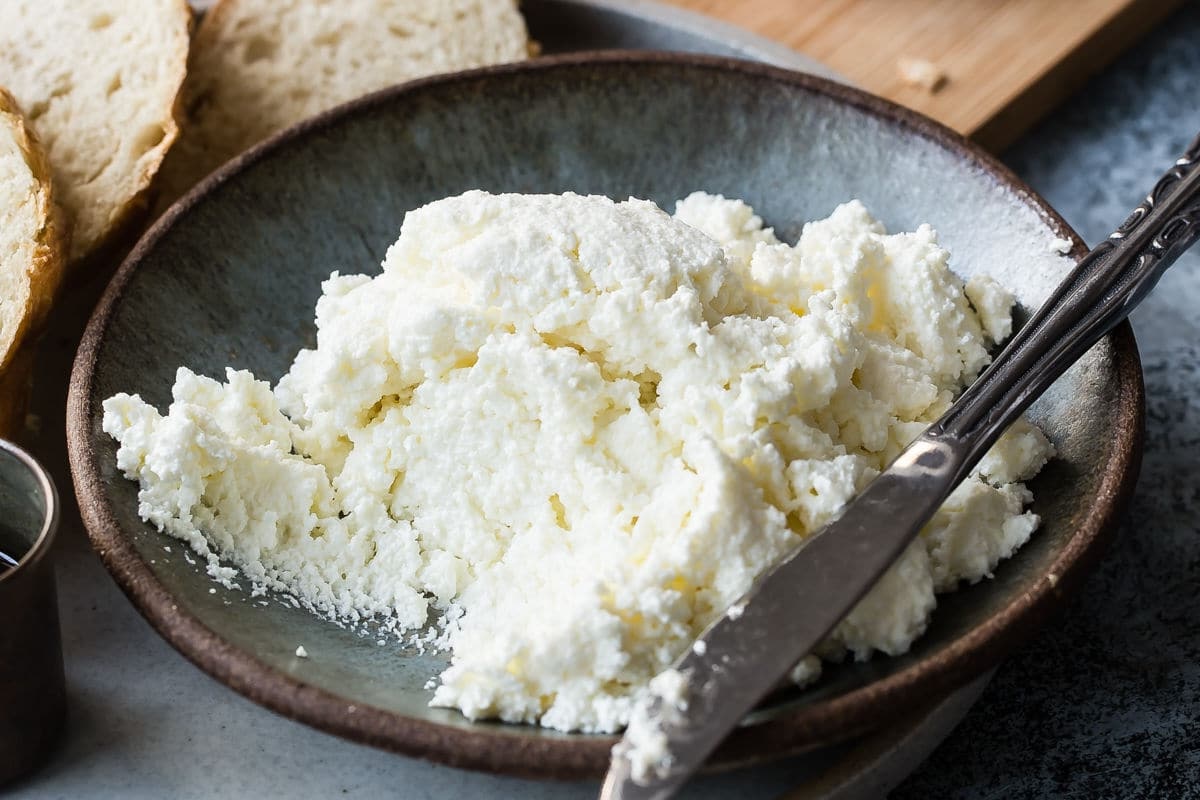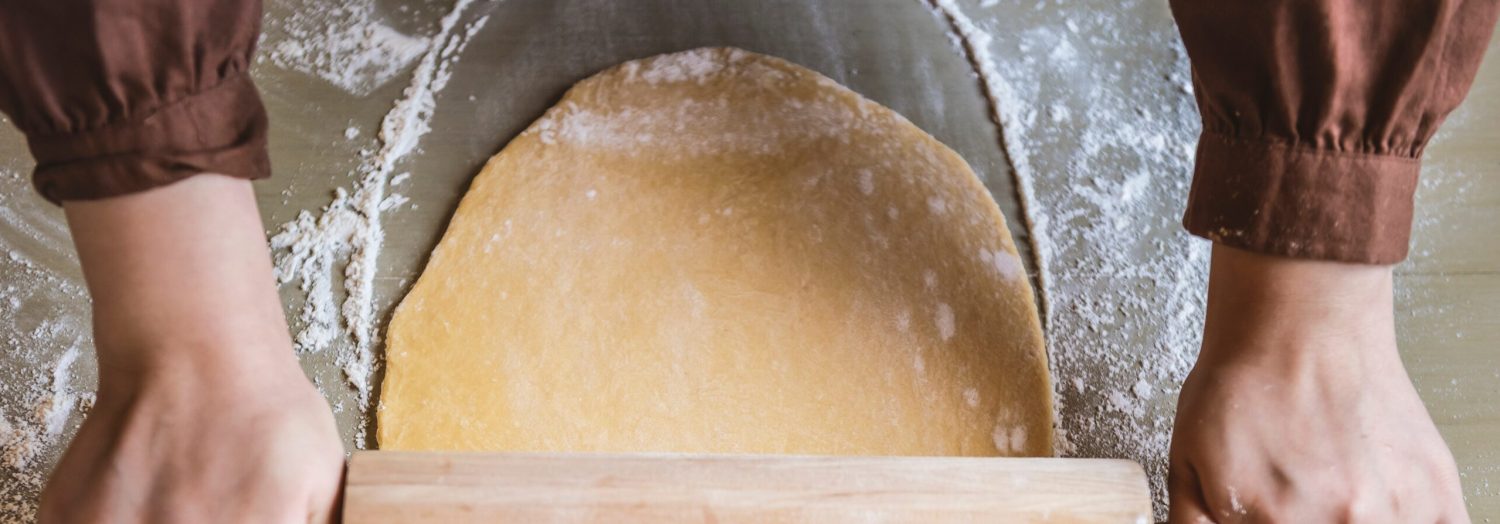Creating ricotta cheese at home is a rewarding and straightforward process. This creamy, versatile cheese can be used in a variety of dishes, from savory pastas to sweet desserts. With just a few simple ingredients, you can enjoy fresh, homemade ricotta that surpasses store-bought versions in both flavor and texture.
While most of the ingredients for this ricotta cheese recipe are common, you may need to purchase heavy cream if it's not a staple in your kitchen. Heavy cream adds richness and a smooth texture to the ricotta. Additionally, make sure you have fresh lemon juice on hand, as it is crucial for curdling the milk and cream mixture.

Ingredients for Ricotta Cheese Recipe
Whole milk: The base for the ricotta, providing the bulk of the cheese's volume and flavor.
Heavy cream: Adds richness and a smooth, creamy texture to the ricotta.
Salt: Enhances the flavor of the ricotta.
Lemon juice: Acts as an acid to curdle the milk and cream, forming the cheese curds.
Technique Tip for Making Ricotta Cheese
When heating the milk and cream, use a candy thermometer to ensure you reach the precise temperature of 190°F (88°C). Stir occasionally to prevent scorching at the bottom of the pot. After adding the lemon juice, avoid stirring too vigorously; gentle stirring helps form the delicate curds. When draining the mixture, resist the urge to press or squeeze the cheesecloth to speed up the process, as this can result in a denser texture. Let gravity do the work for a light and fluffy ricotta.
Suggested Side Dishes
Alternative Ingredients
whole milk - Substitute with 2% milk: If you want a slightly lighter version, 2% milk can be used, though the texture might be a bit less creamy.
whole milk - Substitute with goat milk: For a different flavor profile, goat milk can be used, which will give a tangier taste.
heavy cream - Substitute with half-and-half: This will reduce the fat content while still providing a creamy texture, though it will be slightly less rich.
heavy cream - Substitute with coconut cream: For a dairy-free option, coconut cream can be used, which will add a subtle coconut flavor.
salt - Substitute with sea salt: Sea salt can be used for a slightly different mineral content and flavor.
salt - Substitute with kosher salt: Kosher salt can be used as it has a similar flavor but a different texture.
lemon juice - Substitute with white vinegar: White vinegar can be used to curdle the milk, though it will impart a slightly different flavor.
lemon juice - Substitute with apple cider vinegar: Apple cider vinegar can also be used for curdling, adding a mild apple flavor.
Alternative Recipes Similar to Ricotta Cheese
How to Store or Freeze Ricotta Cheese
To store your freshly made ricotta cheese, transfer it to an airtight container. Place it in the refrigerator where it will stay fresh for up to one week. The cool environment helps maintain its creamy texture and delicate flavor.
If you plan to use the ricotta cheese in a few days, consider placing a piece of plastic wrap directly on the surface before sealing the container. This extra step minimizes exposure to air, keeping your cheese fresher for longer.
For longer storage, freezing is an excellent option. Spoon the ricotta cheese into a freezer-safe container or a heavy-duty freezer bag. Squeeze out as much air as possible before sealing to prevent freezer burn.
Label the container with the date to keep track of its freshness. Frozen ricotta cheese can last up to three months, making it a convenient ingredient for future recipes.
When you're ready to use the frozen ricotta cheese, transfer it to the refrigerator to thaw overnight. This slow thawing process helps retain its creamy consistency.
After thawing, give the ricotta cheese a good stir to reincorporate any separated liquid. If it seems a bit watery, you can drain it through a cheesecloth-lined strainer for a few minutes to achieve the desired texture.
Avoid refreezing ricotta cheese once it has been thawed, as this can negatively impact its texture and flavor. Use it promptly in your favorite dishes like lasagna, stuffed shells, or even as a delightful addition to desserts.
Remember, the key to maintaining the best quality of your ricotta cheese is proper storage and handling. Treat it with care, and it will reward you with its rich, creamy goodness in every bite.
How to Reheat Leftovers
Gently warm the ricotta cheese in a saucepan over low heat. Stir frequently to prevent sticking and ensure even heating. Add a splash of milk or cream if it seems too thick.
Place the ricotta cheese in a microwave-safe bowl. Cover with a damp paper towel to retain moisture. Heat on medium power in 30-second intervals, stirring in between, until warmed through.
For a creamy texture, mix the ricotta cheese with a bit of olive oil or butter before reheating. This can be done either on the stovetop or in the microwave.
If using the ricotta cheese as a filling for pasta or lasagna, incorporate it directly into the dish and bake as usual. The cheese will heat up along with the rest of the ingredients.
To enjoy ricotta cheese on toast or crackers, spread it cold and let it come to room temperature naturally. Alternatively, toast the bread or crackers first and then spread the ricotta on top, allowing the residual heat to warm the cheese.
Best Tools for Making Ricotta Cheese
Large pot: Used to combine and heat the milk, cream, and salt mixture.
Thermometer: Essential for ensuring the mixture reaches the precise temperature of 190°F (88°C).
Strainer: Helps to separate the curds from the whey when draining the mixture.
Cheesecloth: Lines the strainer to catch the ricotta curds while allowing the whey to pass through.
Large bowl: Placed under the strainer to collect the drained whey.
Wooden spoon: Used to stir the mixture gently after adding the lemon juice.
Measuring cups: Necessary for accurately measuring the milk, cream, and lemon juice.
Measuring spoons: Used to measure the salt and lemon juice precisely.
Refrigerator: For storing the ricotta if not used immediately.
How to Save Time on Making Ricotta Cheese
Use a thermometer: Using a thermometer ensures you reach the precise temperature quickly without constant monitoring.
Prep ahead: Measure and set out all ingredients before starting to streamline the process.
Cheesecloth setup: Line the strainer with cheesecloth in advance to save time when the mixture is ready to drain.
Lemon juice ready: Have the lemon juice pre-measured and ready to add immediately after removing from heat.
Quick cooling: Place the ricotta in a shallow container for faster cooling if you need to use it immediately.

Ricotta Cheese Recipe
Ingredients
Main Ingredients
- 8 cups Whole Milk
- 1 cup Heavy Cream
- ½ teaspoon Salt
- 3 tablespoon Lemon Juice
Instructions
- 1. In a large pot, combine milk, cream, and salt. Heat over medium heat until the mixture reaches 190°F (88°C).
- 2. Remove from heat and add lemon juice. Stir gently and let sit for 5 minutes.
- 3. Line a strainer with cheesecloth and place it over a large bowl. Pour the mixture into the strainer and let it drain for 20-30 minutes.
- 4. Transfer the ricotta to a bowl and use immediately or refrigerate.
Nutritional Value
Keywords
Suggested Main Courses and Desserts
More Amazing Recipes to Try 🙂
- Southern Lobster and Shrimp Mac and Cheese Recipe50 Minutes
- Asparagus and Potato Soup with Crab Recipe45 Minutes
- Cajun Shrimp Recipe20 Minutes
- Baked Scalloped Potatoes Recipe1 Hours 20 Minutes
- Crab Crusted Grouper Recipe35 Minutes
- Shrimp Chow Mein Recipe30 Minutes
- Clam Sauce Recipe30 Minutes
- Mexican Shrimp Soup Recipe45 Minutes

Leave a Reply